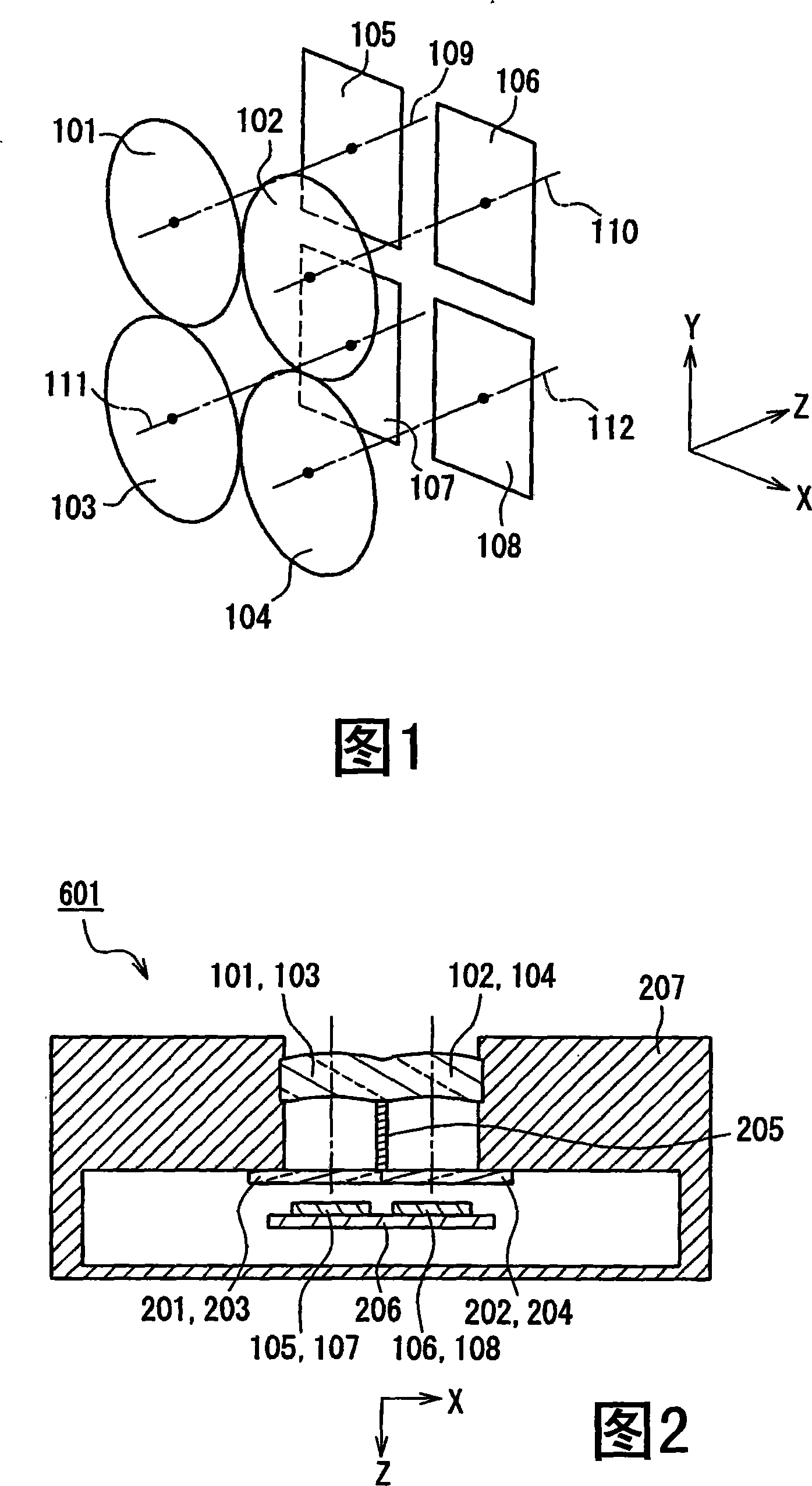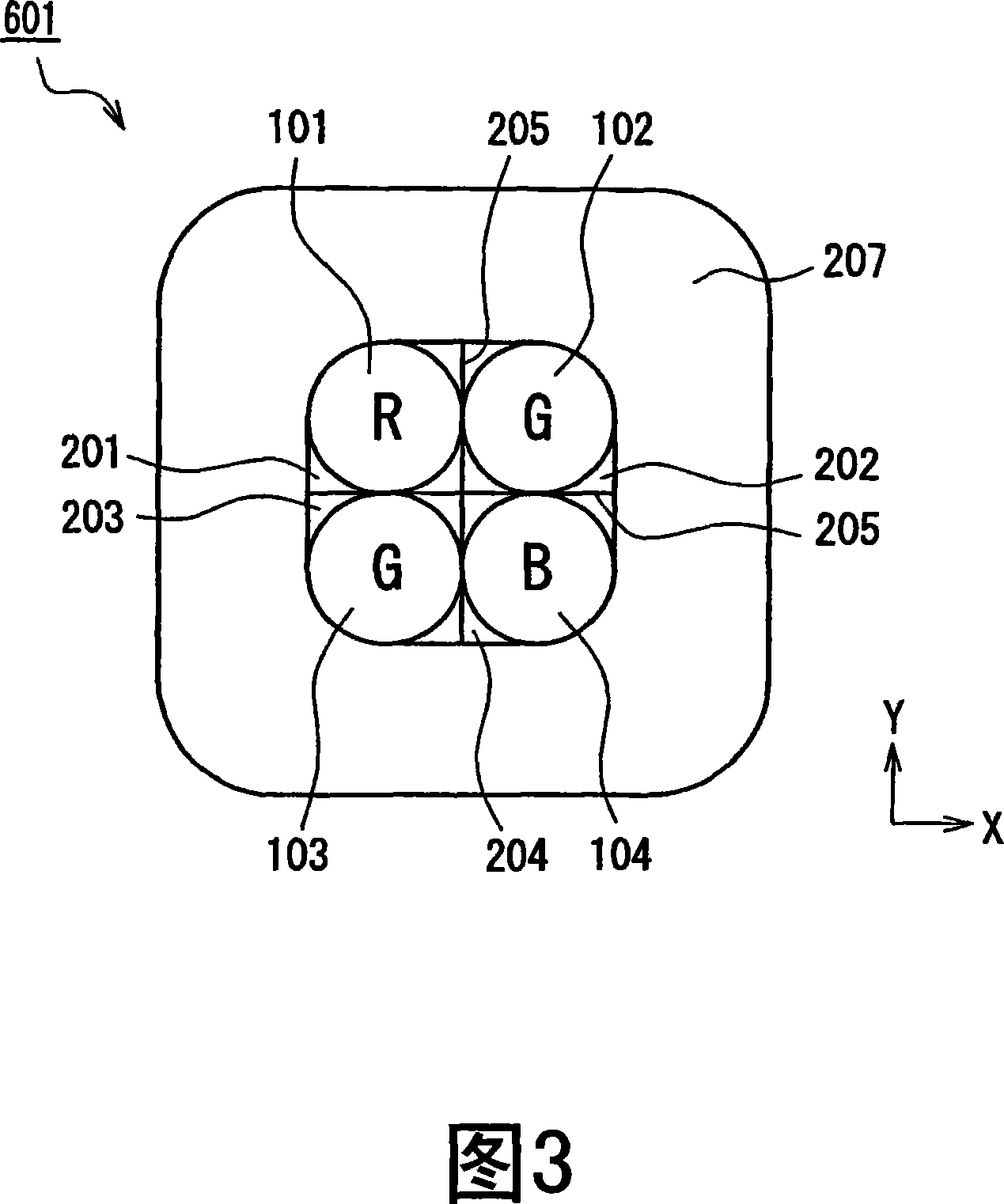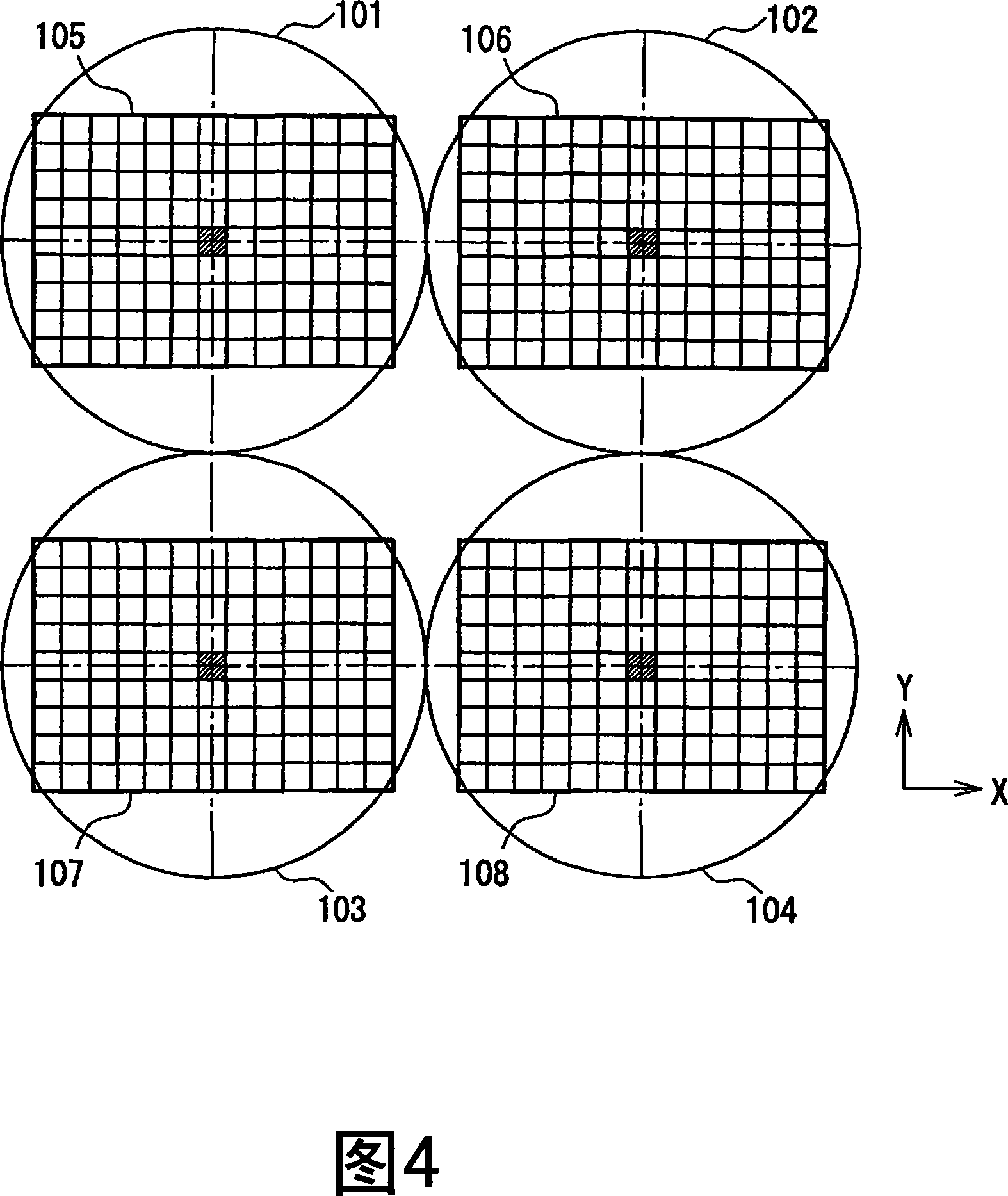Imaging device
A technology of an imaging device and a driving device, which is applied in the fields of imaging sensors and portable devices, and can solve the problems of increased thickness of portable devices and the inability of imaging devices to become thinner, etc.
- Summary
- Abstract
- Description
- Claims
- Application Information
AI Technical Summary
Problems solved by technology
Method used
Image
Examples
Embodiment 1
[0107] An image forming apparatus according to Embodiment 1 of the present invention will be described.
[0108] FIG. 1 is a schematic diagram of an imaging device according to Embodiment 1 of the present invention. Fig. 2 is a cross-sectional view of an image forming apparatus according to Embodiment 1 of the present invention. 3 is a plan view of the imaging device of Embodiment 1 of the present invention viewed from the lens side.
[0109] In FIG. 1 , the imaging device of Embodiment 1 has four single lenses 101 , 102 , 103 , and 104 , and four imaging sensors 105 , 106 , 107 , and 108 corresponding thereto. As shown in Figure 1, the direction of the optical axes 109, 110, 111 and 112 of the single lenses 101, 102, 103, and 104 is represented as the Z axis, the direction perpendicular to the Z axis is represented as the X axis, and the direction perpendicular to the X axis and The direction of the Z axis is represented as a Y axis. The positive directions of the X-axis, ...
Embodiment 2
[0206] A diffraction grating lens in which a diffraction grating is formed on a lens surface will be described. Blazed diffraction gratings are preferred for improved efficiency. However, a blazed grating optimized for a certain wavelength band (for example, green) has high diffraction efficiency for that wavelength band, but poor efficiency for other wavelength bands (for example, red or blue), causing unnecessary light. Imaging systems need to be highly efficient in the green, red and blue bands. Therefore, the use of diffraction gratings in imaging systems has limitations.
[0207] However, in the imaging device of Embodiment 2, a plurality of lens systems and the same number of imaging sensors are arranged in such a manner that the imaging sensors are arranged on the optical axis of each lens system in the same manner as in Embodiment 1. Each lens system corresponds to only one red, green or blue band. Therefore, a blazed diffraction grating optimized for each wavelengt...
Embodiment 3
[0212] Although four imaging sensors are used in Embodiment 1, a single imaging sensor divided into four imaging regions may be used.
[0213] The structure of an image forming apparatus according to Embodiment 3 of the present invention will be described below.
[0214] Fig. 25 is a schematic diagram of an image forming apparatus according to Embodiment 3 of the present invention. Fig. 26 is a top view showing a lens system and an imaging sensor in the imaging device of Embodiment 3 of the present invention. Fig. 27 is a sectional view of an image forming apparatus according to Embodiment 3 of the present invention. In FIGS. 25 to 27, the same components as those in FIGS. 1 to 24 are denoted by the same reference numerals and will not be described again.
[0215] In FIG. 25 , the imaging device has four single lenses 101 , 102 , 103 , and 104 , and a single imaging sensor 900 . Similar to Fig. 1, the direction of the optical axes 109, 110, 111 and 112 of the single lenses ...
PUM
 Login to View More
Login to View More Abstract
Description
Claims
Application Information
 Login to View More
Login to View More - R&D
- Intellectual Property
- Life Sciences
- Materials
- Tech Scout
- Unparalleled Data Quality
- Higher Quality Content
- 60% Fewer Hallucinations
Browse by: Latest US Patents, China's latest patents, Technical Efficacy Thesaurus, Application Domain, Technology Topic, Popular Technical Reports.
© 2025 PatSnap. All rights reserved.Legal|Privacy policy|Modern Slavery Act Transparency Statement|Sitemap|About US| Contact US: help@patsnap.com



